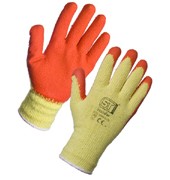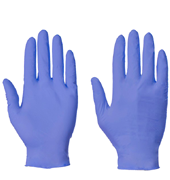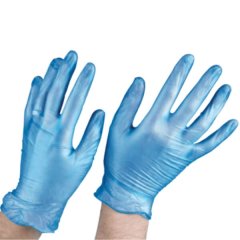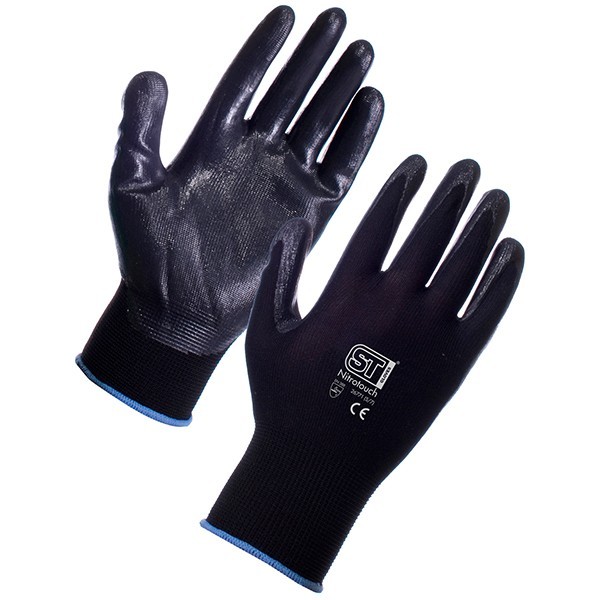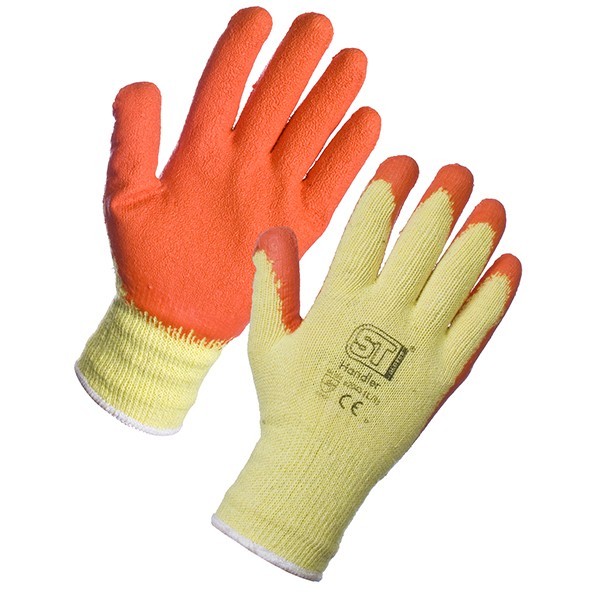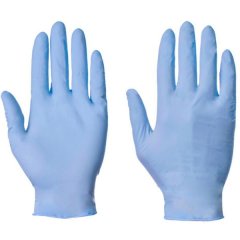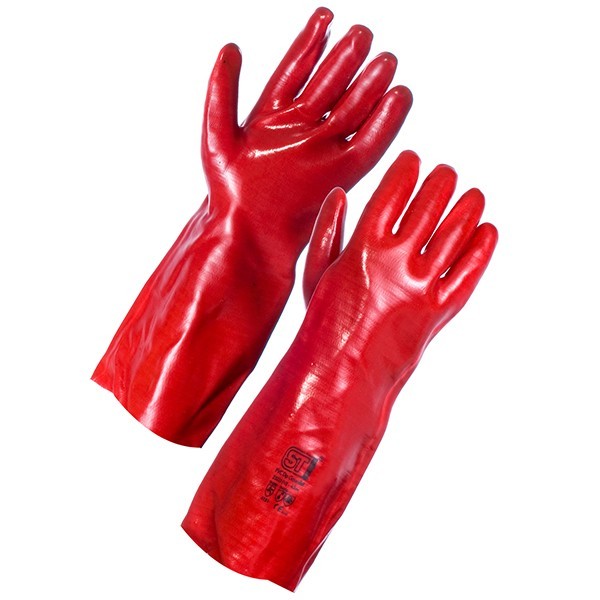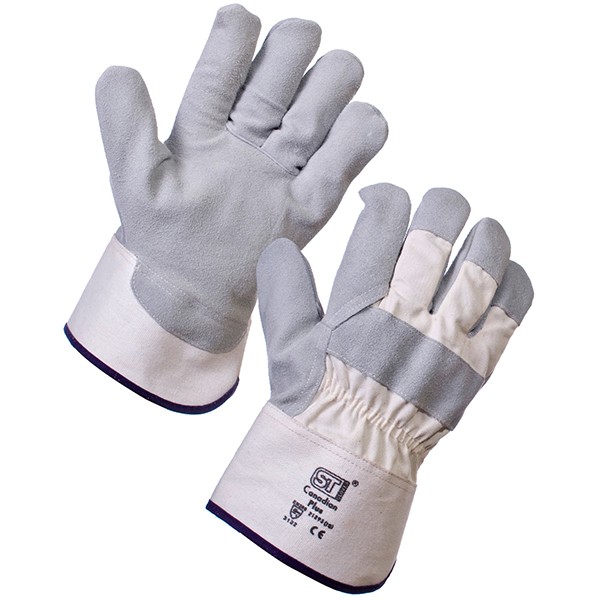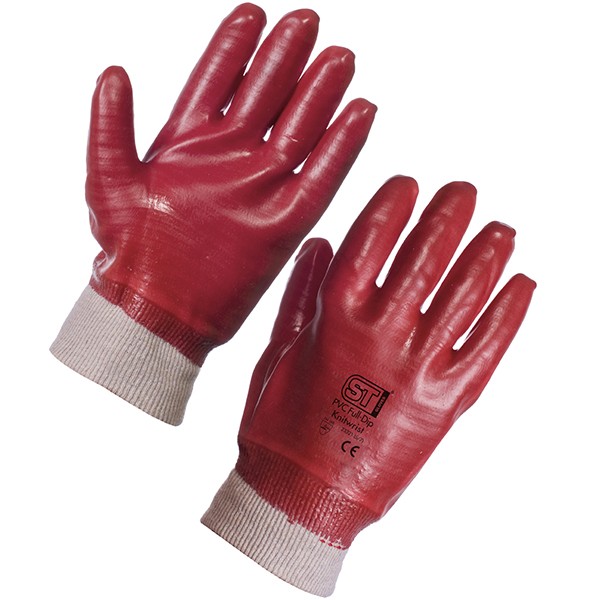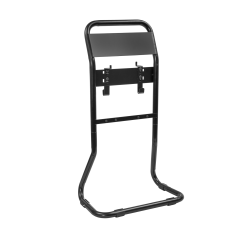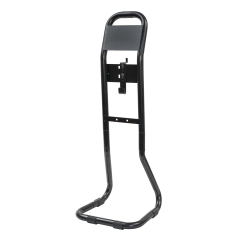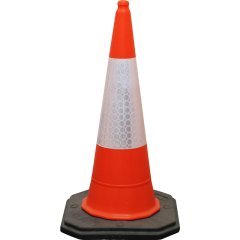Gloves
Gloves
Gloves
Hands at work are extremely vulnerable from hazards including cuts, blows, temperature extremes, and chemicals, and gloves are the most effective. Preventing skin problems and injuries in the workplace where workers are likely to come into contact with harmful substances and risks is what protective gloves do best.
Although you should take every step possible to prevent the need for contact in the workplace, gloves give protection where avoiding contact is impractical or doesn’t offer enough protection.
When you select protective gloves, you should base your choice on the work, the wearer, and the environment. Identify the substances being handles, other potential hazards, the type and duration of contact, consider the tasks being carried out, and ensure it is big enough and comfortable for the worker.
Substance Contact
Gloves differ in design, material, and thickness. No glove material will protect against all substances and no glove will protect against a specific substance forever. So where a disposable glove may be ideal for one situation, another scenario is likely to need a more substantial glove in order to protect.
‘Wet work’ is the term used to describe tasks in the workplace which require prolonged or frequent contact with water, particularly with soaps and detergents. For this type of work, you need gloves which are waterproof and conform to standard EN 374-2.
When it comes to protecting hands from substances and chemicals, you should select gloves which meet the EN 347-3 European Standards. However, you need to give special attention to selecting a glove material which will specifically protect against the substances being handled.
For harmful products with labels and data sheets, these will tell you whether the substance is harmful, and should advise on how to best protect yourself when using it. But for natural substances, and those created through work processes, they don’t come with a set of instructions, so be sure to take extra care.
With different glove materials and manufacturers differing slightly, you have to base your choice on the data provided. There are three key terms to watch out for: Breakthrough time (how long it takes a chemical to permeate through the glove material, Permeation rate (how much moves through the glove), and Degradation (how it deteriorates when in contact with specific materials).
Other Hand Hazards
Gloves are available to protect against cuts, punctures, electrics, hot and cold, mechanics, and vibration. And as you would expect, each risk has a standard for which gloves designed for that purpose should meet.
EN 388 applies to all kinds of protective gloves giving protection from mechanical risks, in respect of physical problems cause abrasions, blade cuts, tearing, or puncturing. Its performance level of each hazard is identified by a number on the glove.
Gloves for thermal hazards must conform to EN 407, for protection against heat and fire, while EN 659 defines the performance requirements for gloves designed to protect fire fighters against heat and flames.
For protection against conductive and contact cold, then the standard you need is EN 511, and EN 421 lays down the criteria for use with ionising radiation and radioactive contamination.
When you’re looking to use gloves in food handling, then it must carry the words ‘for food use’, or display the recognised symbol. Medical gloves are required to be single-use disposable gloves and need to conform to standard EN 455.
Type of Contact
Not only do you need to be sure that the gloves you select are suitable for the material they’re used with, but also the type of contact you’ll have with them. When it comes to chemicals, will the contact be from occasional splashes or from total submersion? This will decide the length of the gloves you pick.
And also, will the gloves be worn for a short time intermittently or for long periods? Generally, thicker and robust gloves offer greater protection than thinner gloves which offer better dexterity.
Gloves should not hamper the tasks, therefore, your choice must also be influenced by the type of work being carried out when you’re expecting users to wear them, and not just the standards required for the task.
So, if you’re handling wet or oily objects, you’d want to choose gloves with a rough or textured surface will provide enhanced grip.
Consider the User
It may seem obvious, but gloves should fit the wearer. Tight gloves will make hands feel tired and lose their grip, while gloves which are too large will impair work. Moreover, comfortable gloves are far more likely to actually be worn.
So when selecting gloves, be sure to have plenty of choice in order to make the right purchase. And for when it comes to actually wearing them, ensure wearers take regular breaks in which they can remove their gloves to avoid hands becoming hot and sweaty.
And lastly, ensure everyone who is expected to wear them knows how to use them properly to protect themselves. Tell them when gloves need replacing, how to clean reusable gloves, and how to store them when not in use.


